Sunrises and sunsets EVs: the first half of the XX century
 Bashny.Net
Bashny.Net
Background: electric Dawn - XIX century .
The most promising type of vehicle in the future can be considered as electric, but while it is still insufficiently improved. Electric motors do not give no noise, no smoke, they are undoubtedly more convenient and perfect all the other ... Энциклопедический Brockhaus and Efron. blockquote>

In the last article, we stopped at the fact that in the early XX century, electric cars were particularly popular in New York - the city rode seventy thousand these taxis by 1910.

In Russia, the dawn of electric vehicles was late, despite the efforts of individual engineers.
In the beginning of the century Moscow has already traveled this omnibus from the company "Dux" ten people. And Hippolyte Romanov, inventor of the electric two-seater, asked the St. Petersburg Duma allow open ten routes - for eighty omnibuses. This turn of events did not suit the owners and tram jobmaster - they did everything possible to project Romanov did not take place. Unfortunately, Romanov lost in this struggle.
For 1914, Russia had 8 electrical crews: 4 trucks, 1 three-wheeled wagon and 3 private cars.
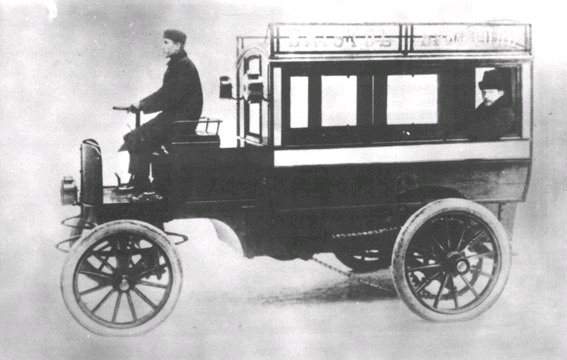
Firm "Dux" trying to make a bus to travel on rails.

As in the United States in the early centuries of electric and steam-powered car was a lot of charging stations there are as common as gas stations. Electric car charging in on some of the barn.
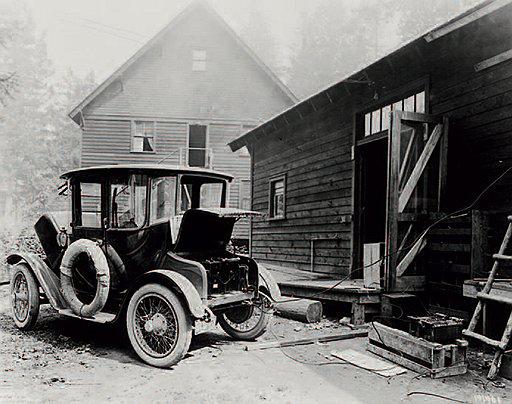
US Senator from Rhode Island, George Whitmore on electric, 1906.
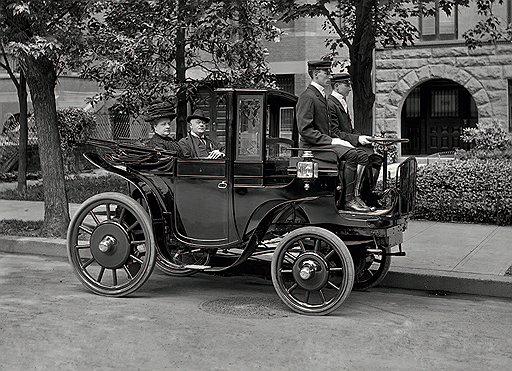
Since 1907 in Detroit began producing cars under the brand Detroit Electric. These electric collected until 1939. Initially the machine is equipped with lead-acid batteries, but from 1911 to 1916 it was possible to choose the version with nickel-iron battery Edison. The maximum speed was 32 km / h, and the car could travel 130 kilometers.
During the First World War, gasoline prices were high, so in the 1910s electric enjoyed great demand - the company sold two million units per year. In 1920 sales were down due to lower prices of cars with internal combustion engine.
In this photo - Thomas Edison in a car of this brand. Owned by Thomas Edison, John D. Rockefeller and wife of Henry Ford - Clara Ford.
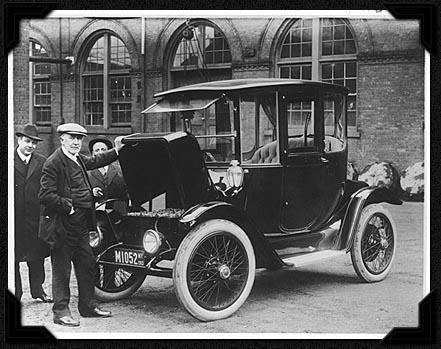
EV-Opera-Car, Model 68/17 B.

Model 1915.
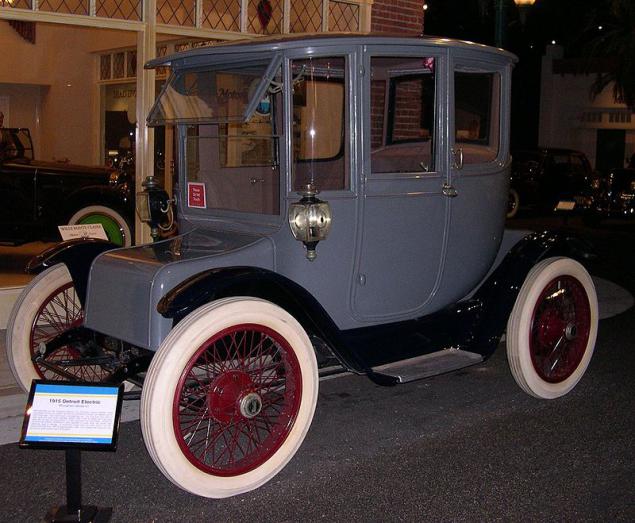
Print Ads Detroit Electric cars of the 1920s.

Hybrid cars are not invented yesterday and the day before yesterday. In 1916, Clinton Edgar Woods began production car Woods Dual Power Model 44 Coupe with an electric motor and an internal combustion engine - just two.
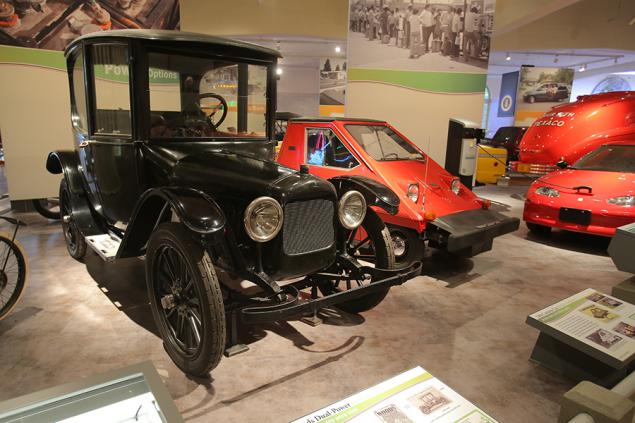
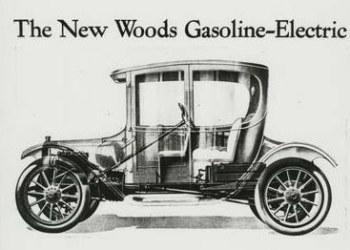
In the Soviet Union in 1935 built electric car based on GAZ-A.
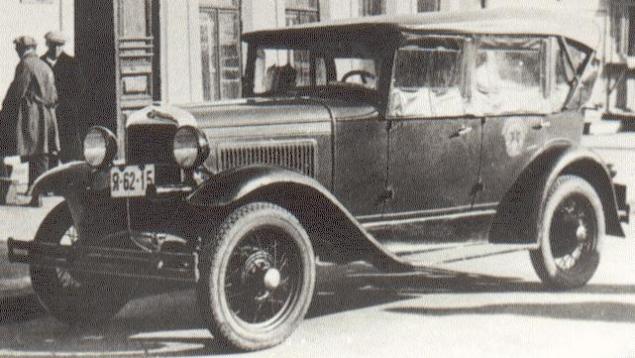
In the same year, MEI built a garbage truck battery to remake it ZIS-5. The car was equipped with forty batteries total capacity of 168 ampere-hours, their weight is 1400 kg. This electric vehicle was capable of transporting litter weight 1800 kg at 24 km / h at forty kilometers. Engine power - 13 kW.

Swedish truck with an electric motor, 1943.
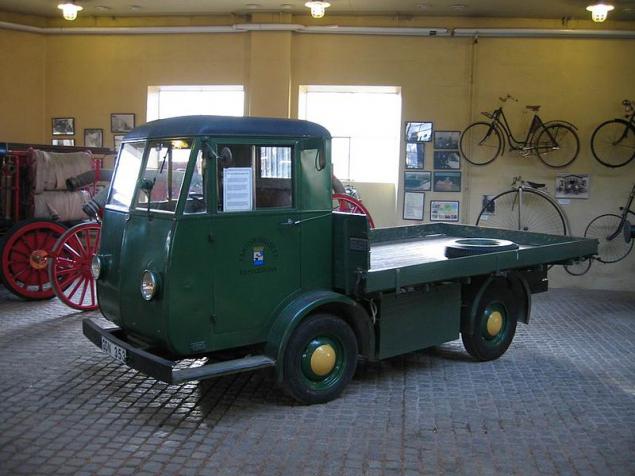
Nissan TAMA 1947 was carried out in the passenger and freight versions. It was the first car with an electric motor Nissan.

Four electric NAMI-LAZ carrying capacity of 0, 5 and 1, 5 tons in 1948 used the Moscow-mail. Another ten prototypes until 1958 carried mail in Leningrad.

Peak production of electric vehicles hit the 1910s. From electric vehicles did not have fumes and soot, women chose them because they do not have to have nedyuzhy physical strength to run them - as opposed to internal combustion engines.
What were the disadvantages of electric cars? The roads have become too good, people would go away - and in turn of the century it was more difficult to place through every hundred kilometers charging stations . Without recharging electric cars could drive a hundred-hundred and thirty kilometers, as well as some of the cars now.
Thanks to Henry Ford car prices fell, and the growth of oil production caused a reduction in the cost of fuel. Electric starter - it developed in 1912 - made cars with internal combustion engine more comfortable. From the thirties the production of electric vehicles has ceased to be a massive, despite attempts to use them for business purposes.
In 1960-1970-ies people to think about the environment and again remembered the electric motors. But that's another story ...

Source: geektimes.ru/post/246542/
Tags
See also
Interesting facts about Italy
The first half of the day was
The best advertising the first half of November 2012
The best advertising the first half of August 2012
The best advertising the first half of March 2012
Unusual palette in the sky at dawn and dusk
Serie A: results of the first half of the season
Photos of the sky during sunrise and sunset.
Life in the US Women's Prison, where
The genius of the XIX century and the creation of a giant



































